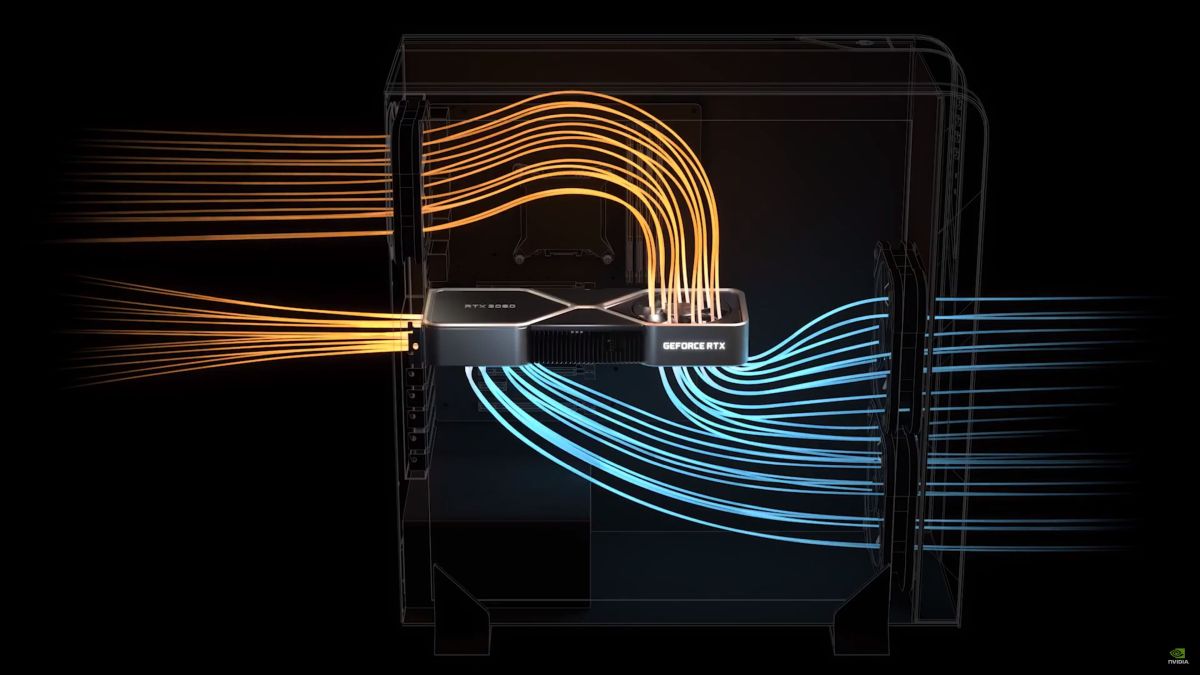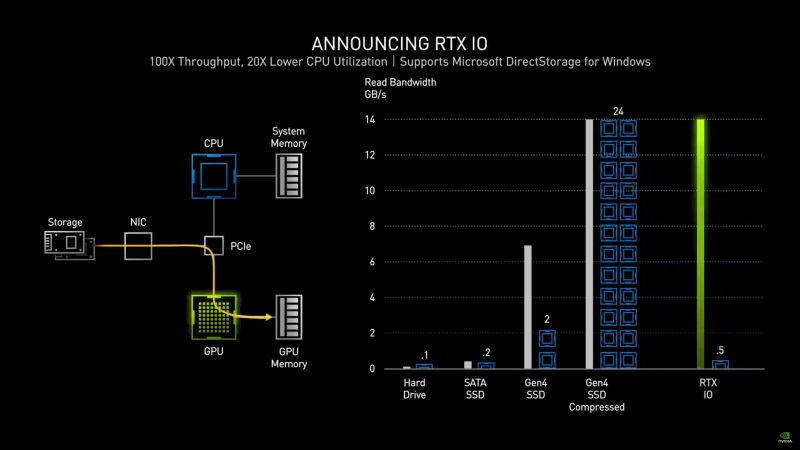Earlier today, NVIDIA officially launched its GeForce RTX 30 series graphics cards, all powered by its new Ampere GPU architecture. Prior to their unveiling, the GPU brand also spoke briefly of the new technologies that would be made available alongside the new GPUs. Chief among them being something known as RTX IO.
To put it in laymen terms, NVIDIA’s RTX IO technology was designed to help offload a major portion of loading times and texture rendering from a system’s CPU and have it processed by the GPU. Jen-Hsun Huang, CEO of NVIDIA, describes the process as a “rapid GPU-based loading and game asset decompression”.
To provide some context, textures and load times are governed by the read and write speeds of the storage devices, and the CPU. The latter typically does this on the fly, rendering high quality texture and streaming them at a blistering rate. Ensuring that objects appear in-game and minimise any stuttering.

Of course, how fast this task is done depends on several factors; loading game assets from a traditional HDD will naturally be slow, and while top-tier NVMe SSDs boast lightning-fast speeds, its storage capacities are still playing catch up to its mechanical cousins. On that note, it also doesn’t help that file size of many popular games have grown exponentially, with the latest Call of Duty: Modern Warfare and its multiplayer mode, Warzone, currently sitting at 224GB.
With RTX IO, NVIDIA aims to offer up to 100x faster drive performance and approximately 20 times lower CPU utilisation, while also potentially allowing game developers to cut down game download and install sizes. While the feature is designed for Ampere, Huang did specify that RTX IO will also function with Turing-powered GPUs. So, don’t go throwing out your RTX 20 series just yet.
Follow us on Instagram, Facebook, Twitter or Telegram for more updates and breaking news.



